Kinetic Friction - Definition, Examples, Quiz, FAQ, Trivia
Discover how friction affects moving objects in our everyday lives!
What is Kinetic Friction?
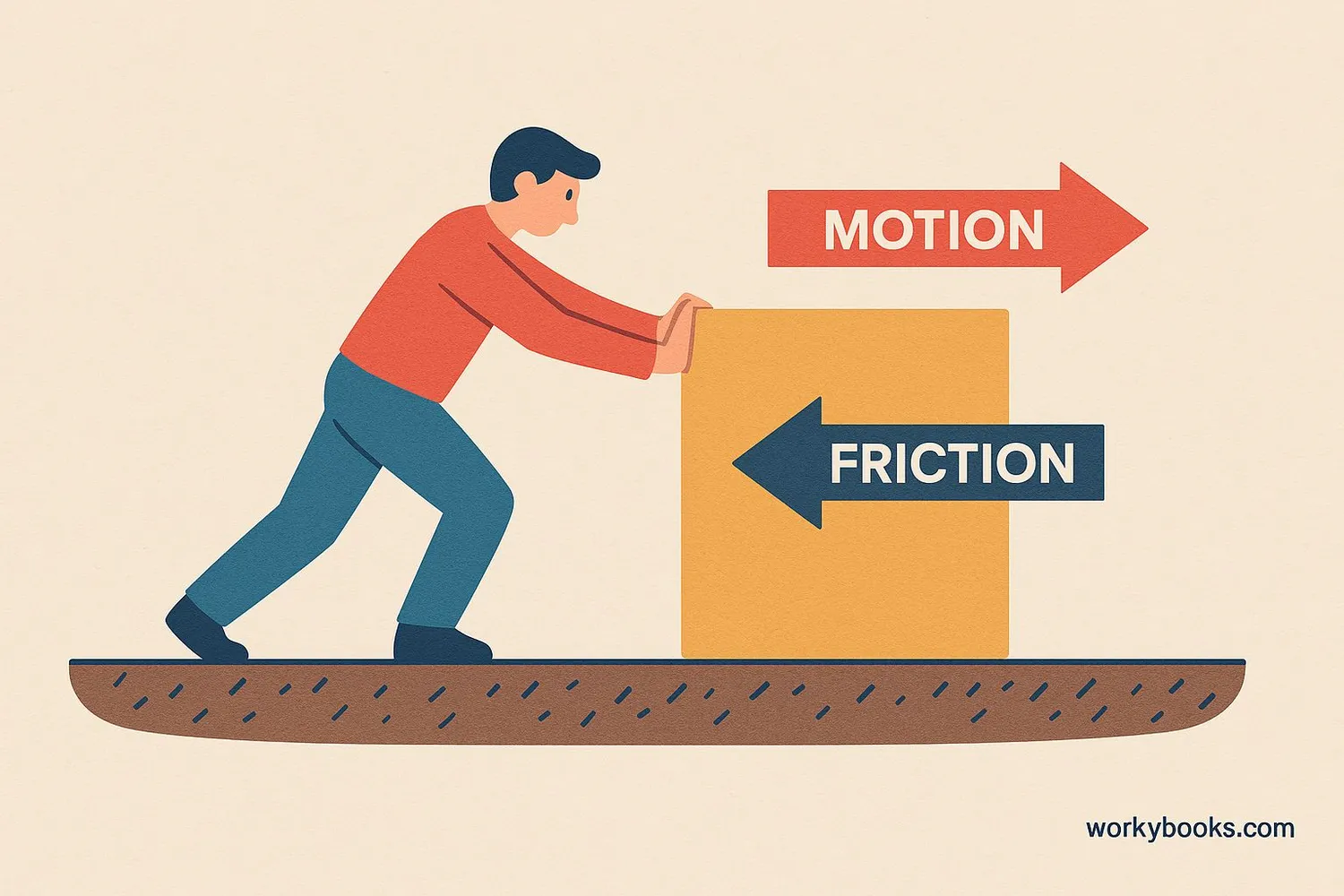
Kinetic friction is the force that opposes the motion of two surfaces sliding against each other. When you push a book across a table or slide on a playground, kinetic friction is what eventually slows you down and stops you.
Think of kinetic friction as the "slowing down" force. It happens whenever objects are already moving against each other. Without kinetic friction, we would slide around uncontrollably! It's what allows us to walk without slipping and helps cars stop when brakes are applied.
Key Point
Kinetic friction only occurs when objects are already in motion relative to each other.
Kinetic Friction Formula
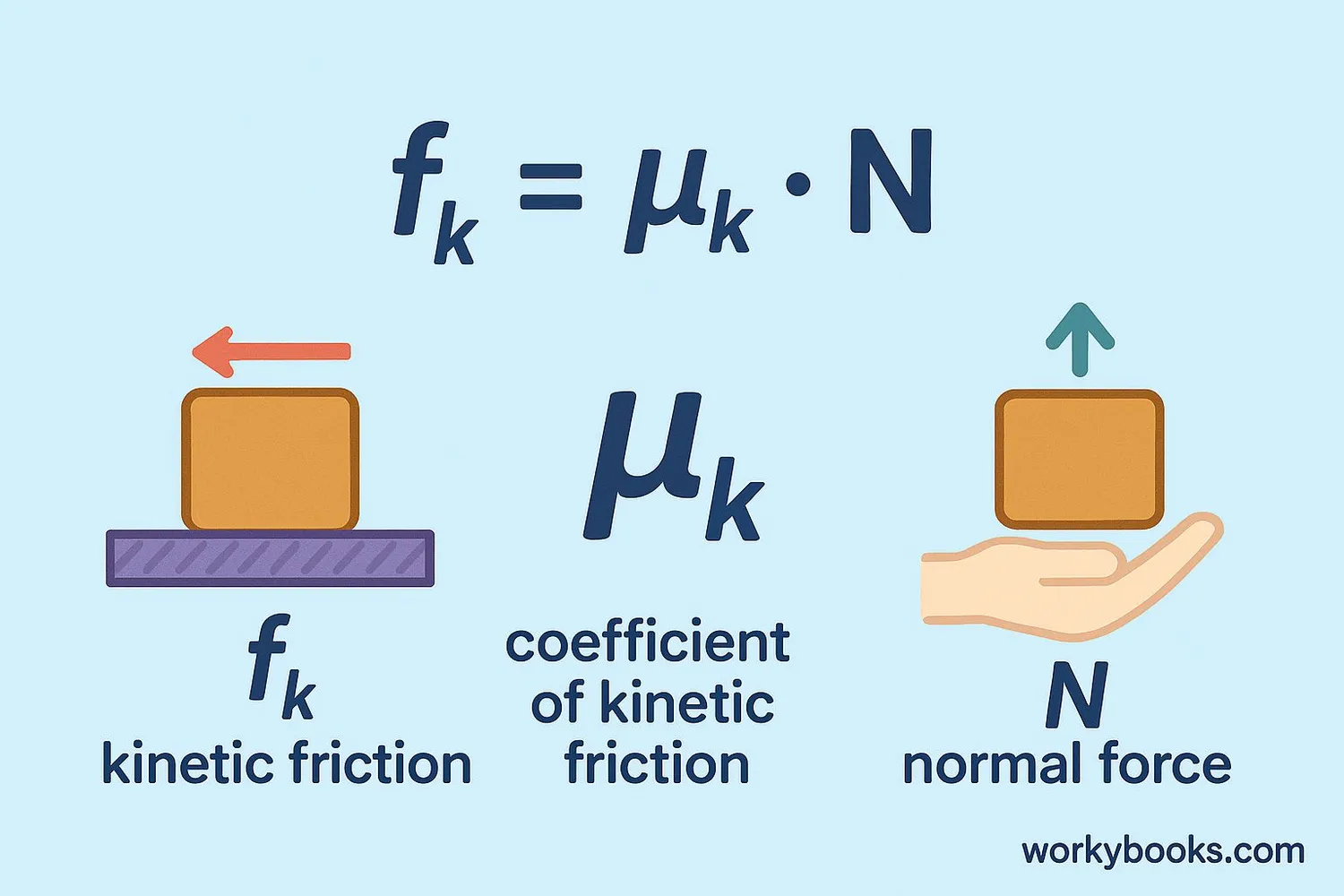
Scientists use a special formula to calculate kinetic friction:
Where:
• fk is the force of kinetic friction (measured in Newtons)
• μk (mu) is the coefficient of kinetic friction (a number that depends on the materials)
• N is the normal force (the force pushing the surfaces together, like weight)
This formula tells us that kinetic friction depends on two things: what materials are rubbing together (μk) and how hard they're being pushed together (N).
Example Calculation
If a 10N box has a coefficient of kinetic friction of 0.3 with the floor, the kinetic friction would be 0.3 × 10N = 3N.
Coefficient of Kinetic Friction
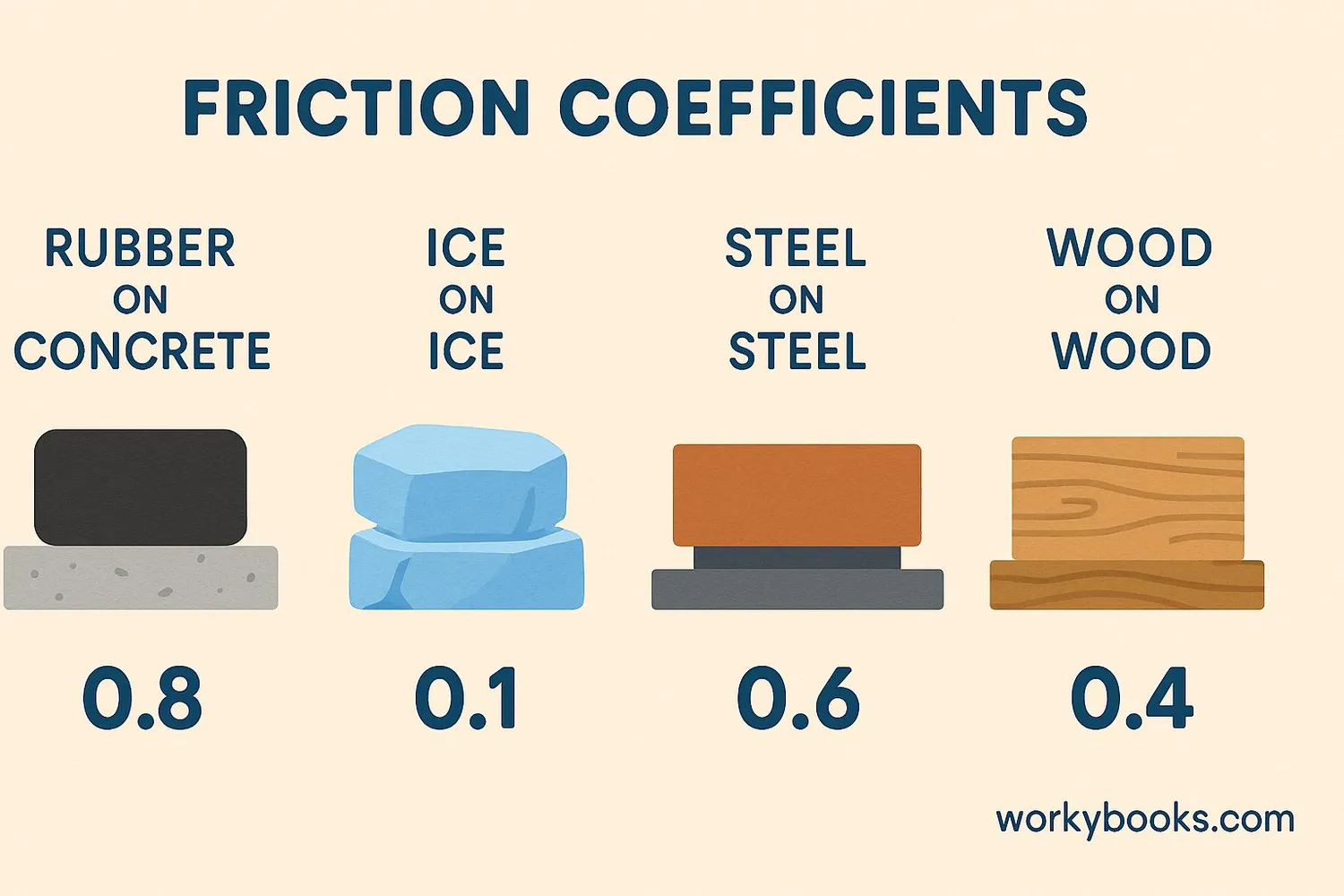
The coefficient of kinetic friction (μk) is a number that represents how "grippy" or "slippery" two surfaces are when sliding against each other. This number has no units—it's just a value that scientists have measured for different material combinations.
High Coefficient
Rough surfaces like rubber on concrete (μk ≈ 0.8)
Medium Coefficient
Wood on wood (μk ≈ 0.2-0.5)
Low Coefficient
Slippery surfaces like ice on ice (μk ≈ 0.03)
The coefficient depends on both surfaces involved. For example, rubber on dry concrete has a high coefficient (about 0.8), while ice on ice has a very low coefficient (about 0.03). This is why it's much harder to stop on ice than on a dry road!
Kinetic vs Static Friction
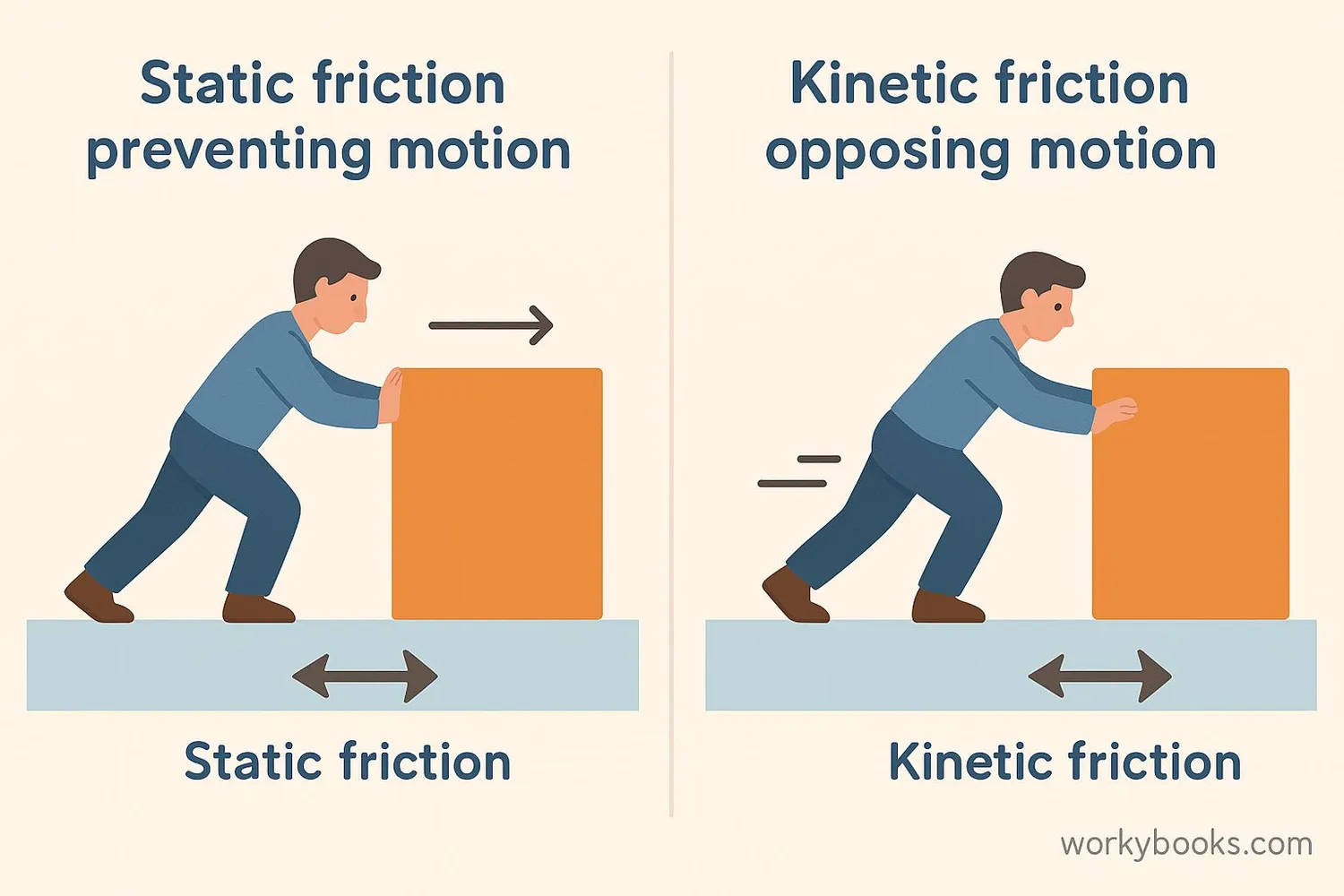
There are two main types of friction: static friction and kinetic friction. It's important to understand the difference:
Static Friction
Acts on objects that are not moving. It prevents motion from starting.
Kinetic Friction
Acts on objects that are already moving. It opposes existing motion.
An interesting fact: static friction is usually stronger than kinetic friction for the same surfaces. This means it takes more force to start moving an object than to keep it moving. That's why you might have to push harder to get a heavy box started than to keep it sliding.
Real World Example
When trying to push a car that's stuck, it's hardest to get it moving (overcoming static friction). Once it's moving, it's easier to keep it going (fighting kinetic friction).
Real-World Examples of Kinetic Friction
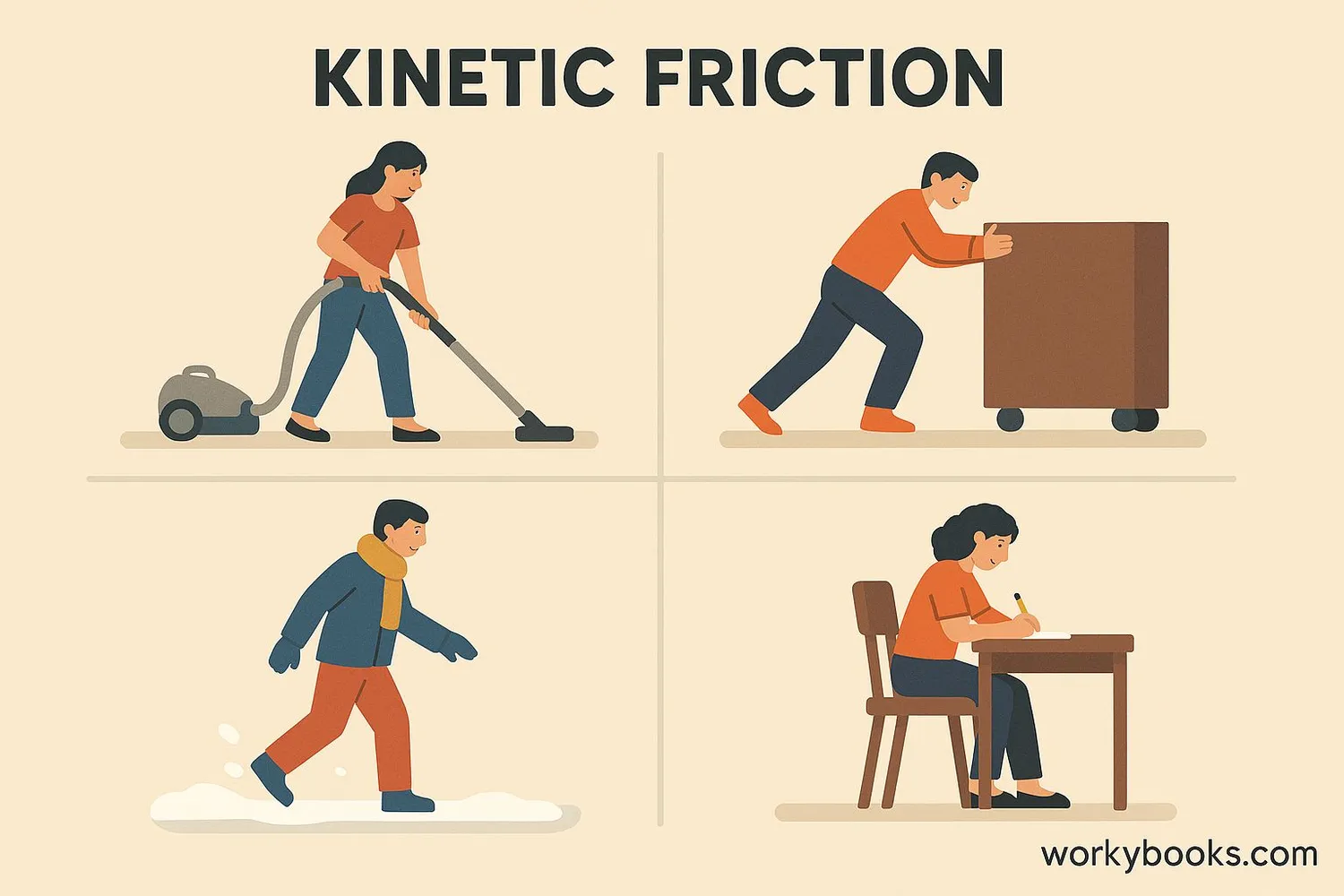
Kinetic friction is everywhere in our daily lives. Here are some common examples:
Brakes Stopping a Car
Brake pads create kinetic friction with wheels to slow down vehicles
Writing with a Pencil
Graphite rubs off due to kinetic friction with paper
Rubbing Hands Together
Kinetic friction between palms generates heat
Sometimes we want more kinetic friction (like with car brakes or shoe soles), and sometimes we want less (like with ice skates or lubricated machine parts). Understanding kinetic friction helps engineers design better products and safer environments.
Kinetic Friction Knowledge Check
Test your understanding of kinetic friction with this quiz. Answer all 5 questions to see how much you've learned.
Frequently Asked Questions
Here are answers to some common questions about kinetic friction:
Interesting Friction Facts
Discover some amazing facts about friction and how it affects our world!
Meteor Magic
When meteors enter Earth's atmosphere, air resistance (a type of fluid friction) creates so much heat that they glow brightly, creating what we call "shooting stars."
Gecko Gravity-Defiance
Geckos can walk upside down on ceilings thanks to microscopic hairs on their feet that create van der Waals forces—a special type of electrical attraction that works like super friction!
Olympic Curling
In curling, players sweep the ice in front of the sliding stone to melt a thin layer of ice, reducing friction and helping the stone travel farther and straighter.
Maglev Trains
Maglev trains use magnetic levitation to float above tracks, eliminating wheel-track friction entirely. This allows them to reach speeds over 375 mph (600 km/h)!


